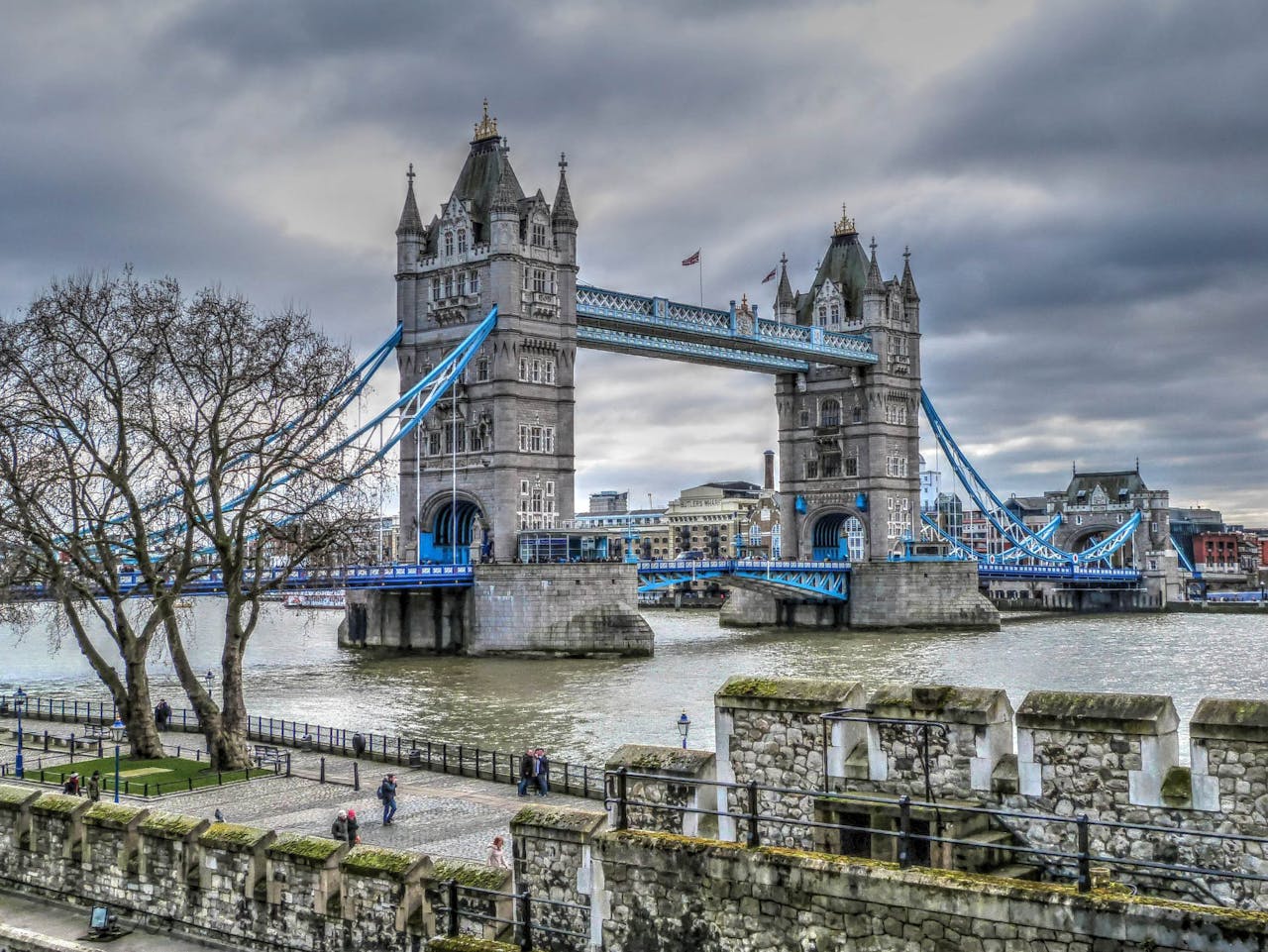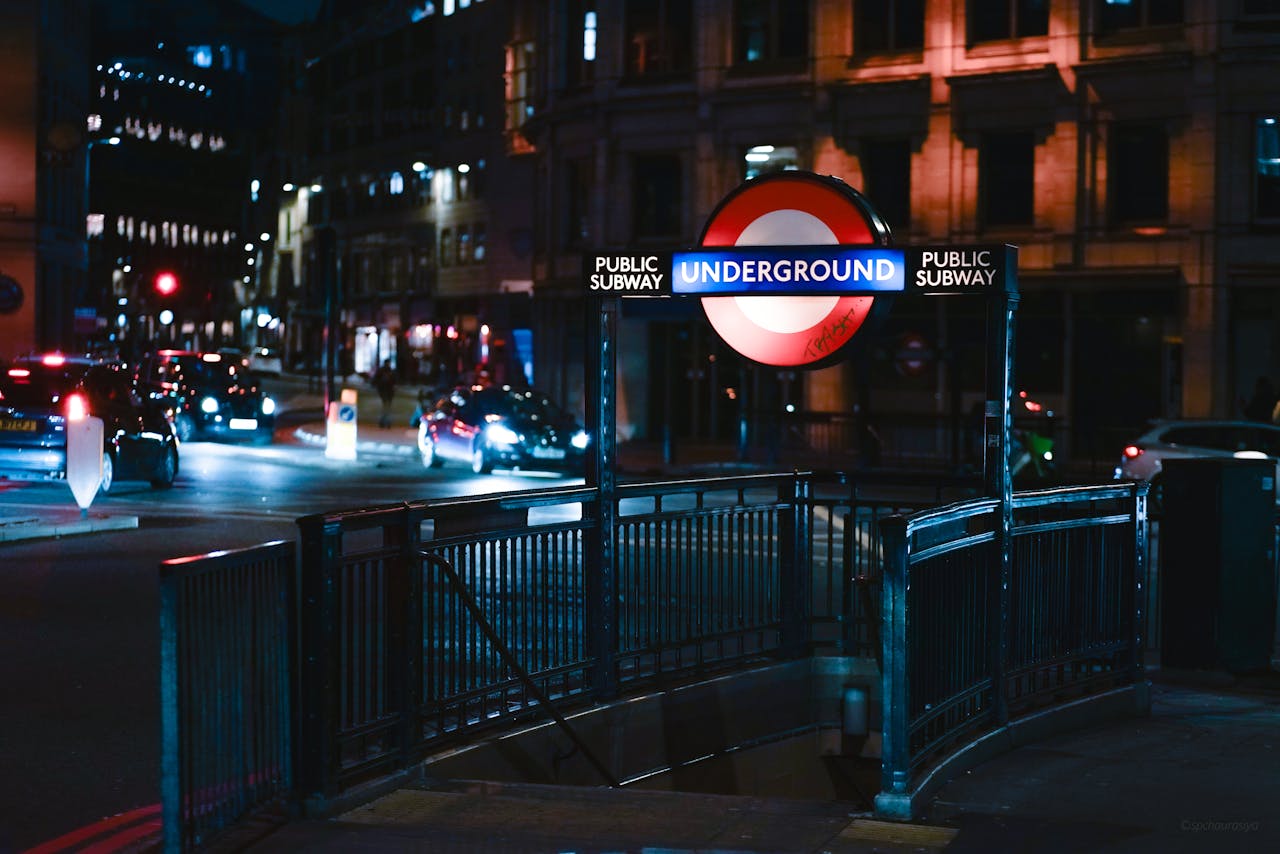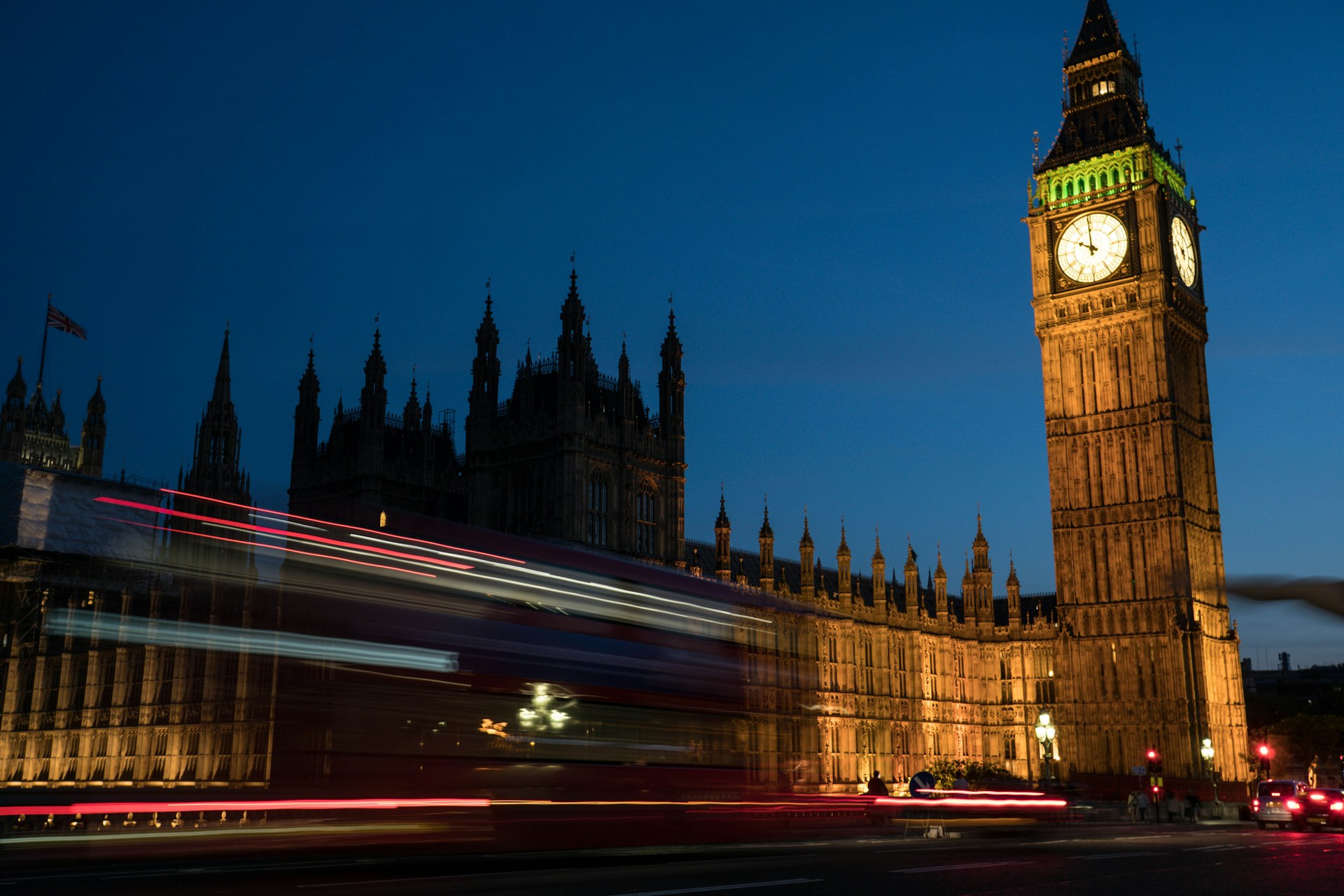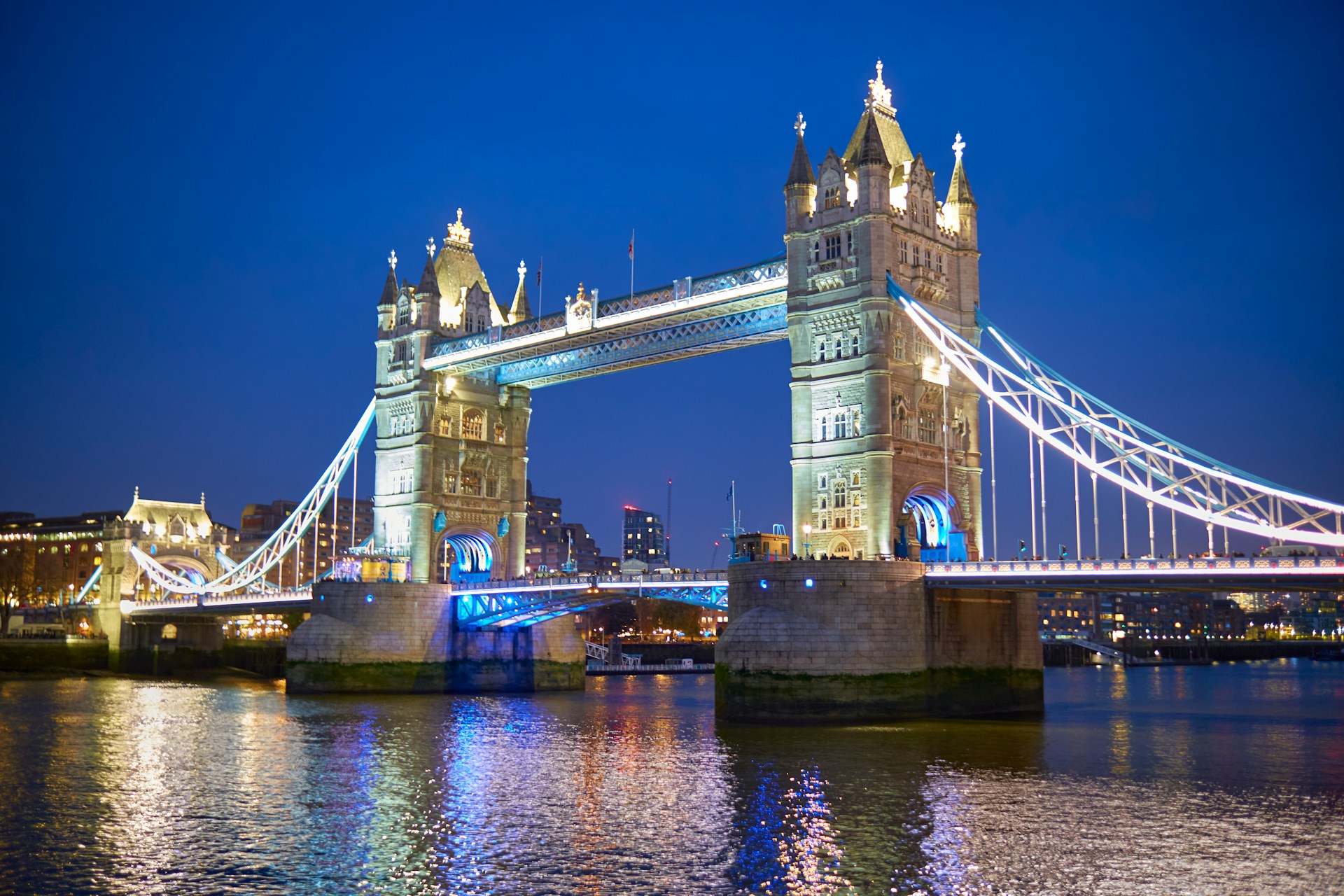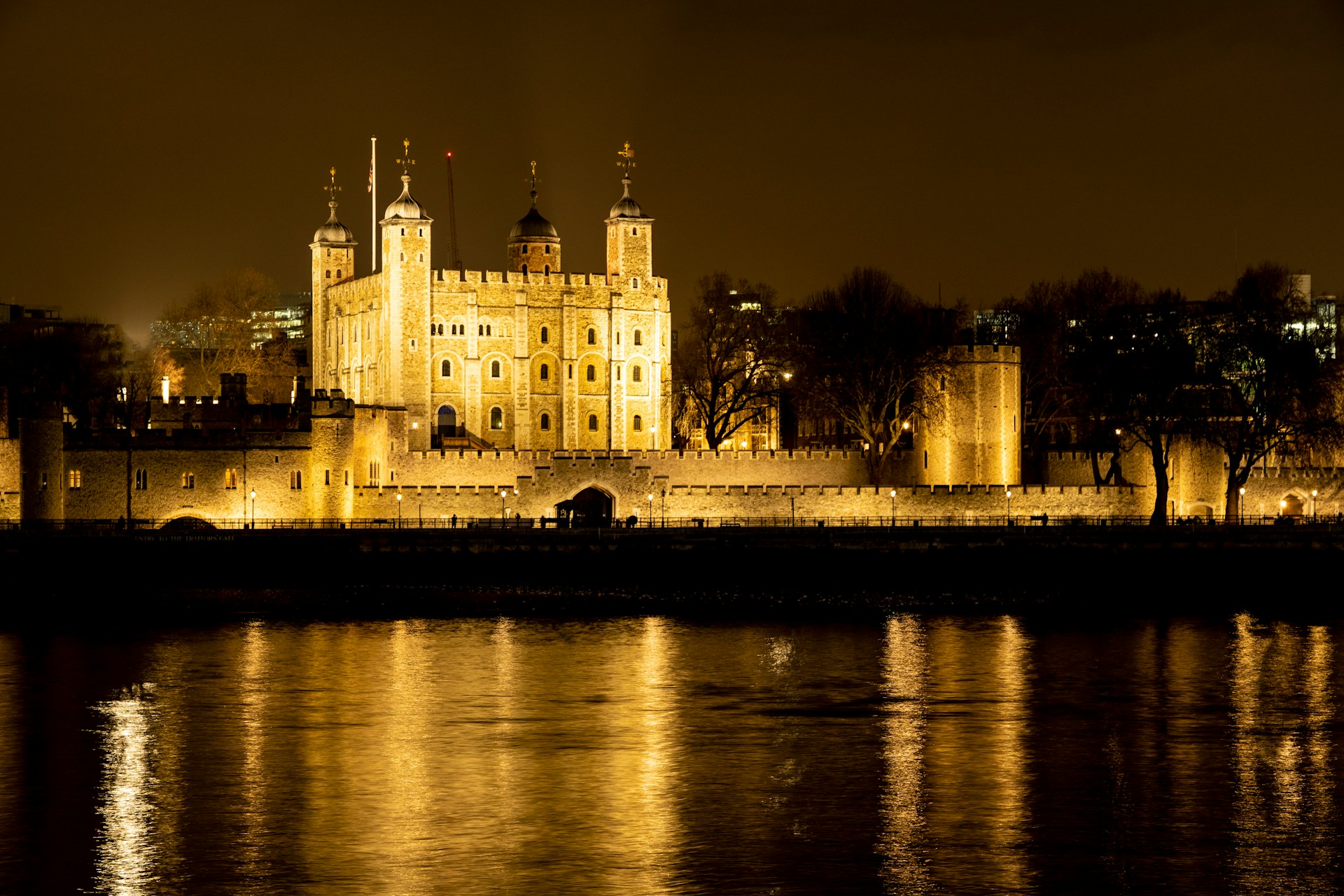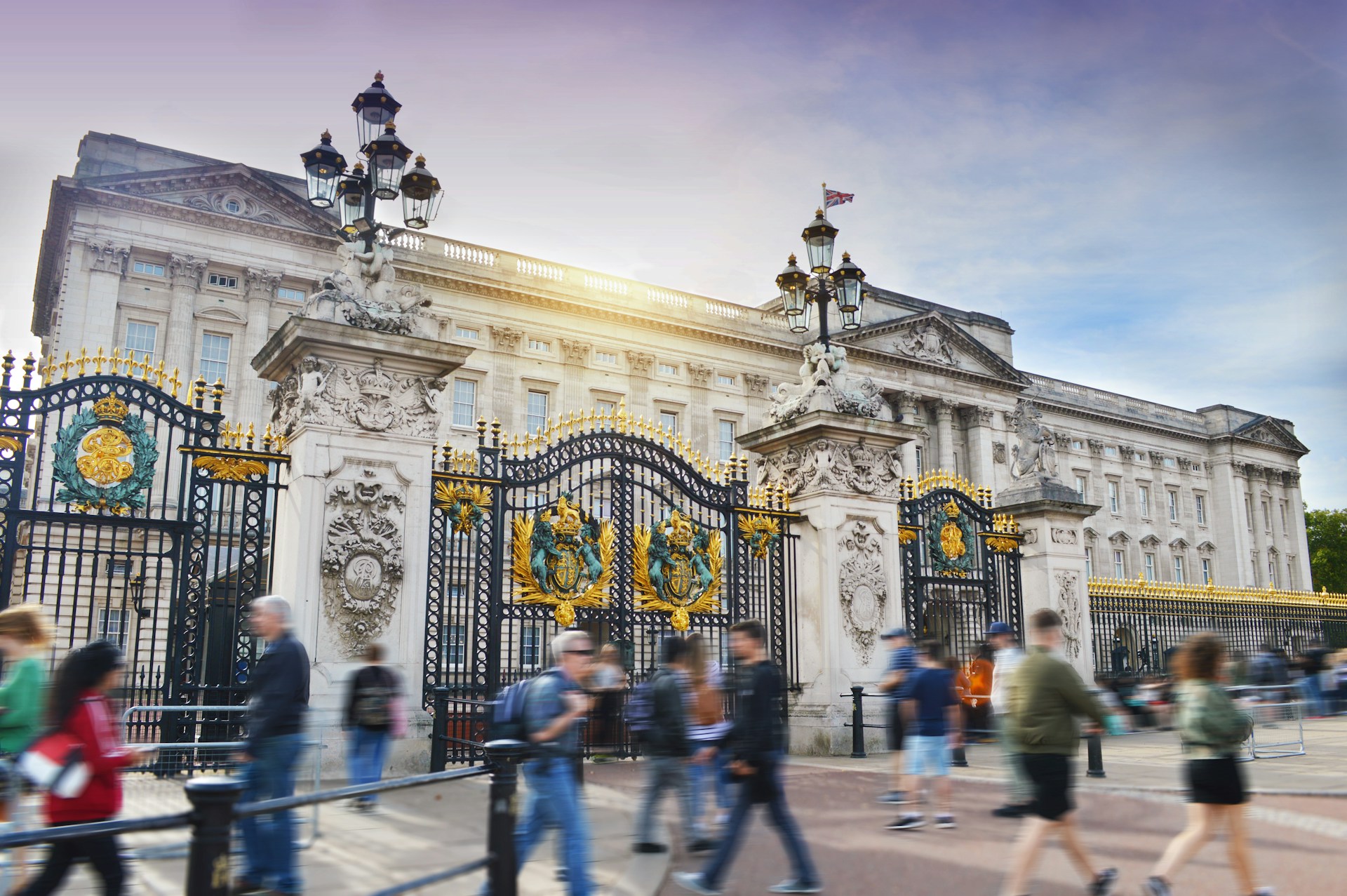London Bridge, a name that echoes through history and resonates in the popular nursery rhyme “London Bridge is Falling Down,” is more than just a crossing over the River Thames1. It’s a symbol of London’s enduring spirit, a witness to centuries of triumphs and tragedies, and a testament to human ingenuity and resilience1. This article delves into the captivating story of London Bridge, exploring its rich past, architectural evolution, and its significance as a modern-day landmark.
A Bridge Through the Ages
The history of London Bridge stretches back almost 2,000 years, with the first bridge built by the Romans in 43 AD2. This early structure was a simple wooden pontoon bridge, consisting of planks laid across anchored boats2. As London grew, so did the need for a more robust crossing, leading to the construction of a fixed wooden bridge in 984 AD2. However, this bridge met a dramatic end in 1014 when Viking invaders, led by King Olaf Haraldsson, tore it down during a fierce battle2. This destruction may even be the origin of the nursery rhyme “London Bridge is Falling Down,” with its lyrics echoing the bridge’s vulnerability in those tumultuous times3.
The first stone version of London Bridge arose between 1176 and 1209 under the guidance of Peter of Colechurch, a priest and architect2. This medieval marvel spanned 900 feet and featured a drawbridge to facilitate river traffic and defend against invaders2. The drawbridge was a crucial element of the bridge’s design, allowing larger ships to pass through and providing a defensive mechanism against potential attackers4. Over time, shops and houses sprang up along the bridge, transforming it into a bustling hub of commerce and daily life2. This “Old London Bridge” endured for over 600 years, surviving fires, floods, and the ravages of time2. For centuries, it was the only crossing over the Thames, solidifying its importance as a gateway to the city and a vital artery for trade and transportation5.
By the 18th century, the medieval bridge was showing its age3. A new bridge, designed by John Rennie, was built 100 feet west of the original location and opened in 18315. This “New London Bridge” boasted five elegant stone arches and served London faithfully for 140 years2. However, the ever-increasing weight of 20th-century traffic eventually took its toll, and the bridge began to sink at a rate of one inch every eight years3.
Interestingly, before settling on John Rennie’s design, civil engineer John Smeaton advised on the bridge’s construction, and Thomas Telford, the first president of the Institution of Civil Engineers, even submitted a design for a new London Bridge4. Telford’s design, featuring a cast iron arch, was considered too bold for the time, and Rennie’s more traditional stone arch design was ultimately chosen4.
In 1968, facing the need for a more modern and stable crossing, the City of London made the surprising decision to sell Rennie’s “New London Bridge” to American entrepreneur Robert P. McCulloch5. The bridge was meticulously dismantled, with each of its 10,276 granite blocks numbered, and shipped to Lake Havasu City, Arizona, where it was painstakingly reconstructed as a tourist attraction5.
The current London Bridge, a sleek and modern structure made of concrete and steel, was constructed between 1968 and 19722. It was built directly over the foundations of the old bridge, ensuring minimal disruption to the bustling city2. While perhaps not as visually flamboyant as its neighbor, Tower Bridge, the modern London Bridge, designed by Mott, Hay & Anderson with Lord Holford as the architectural advisor4 has a minimalist aesthetic with its pre-stressed concrete cantilevers6. This understated design reflects a shift in architectural priorities, where functionality and efficiency took precedence over ornate decoration2.
The bridge also features a pedestrian walkway, which was originally closed in 1910 due to lack of use but reopened in 1982 as part of the bridge’s transformation into a modern landmark7. Today, the modern London Bridge stands as a vital artery of the city, connecting north and south London and facilitating the flow of traffic and pedestrians across the Thames2.
Notable Events and Interesting Facts
London Bridge has witnessed countless events throughout its long history. Here’s a timeline of some notable occurrences and intriguing facts:
| Year | Event | Description | Citation |
|---|---|---|---|
| 1014 | Destruction by Vikings | The wooden London Bridge was destroyed by Viking invaders led by King Olaf Haraldsson. | 2 |
| 1212 | Devastating Fire | A fire broke out on both sides of the bridge, trapping people and causing significant loss of life. | 2 |
| 1305-1660 | Display of Traitors’ Heads | The severed heads of traitors were displayed on pikes at the southern gate of the bridge. | 8 |
| 1666 | Great Fire of London | The bridge was spared from the Great Fire due to a firebreak created by a previous fire in 1633. | 1 |
| 1831 | Opening of “New London Bridge” | The “New London Bridge” designed by John Rennie was opened. | 2 |
| 1968 | Relocation to Arizona | The “New London Bridge” was sold and relocated to Lake Havasu City, Arizona. | 2 |
| 1973 | Opening of Current Bridge | The current London Bridge was opened by Queen Elizabeth II. | 5 |
Tourist Information
Today, London Bridge is a popular destination for tourists from all over the world. Here’s what you need to know:
Getting There:
- Train: London Bridge is served by National Rail and is a short walk from Fenchurch Street station9.
- Tube: The nearest Tube stations are London Bridge (Northern and Jubilee lines) and Tower Hill (District and Circle lines)9.
- Bus: Numerous bus routes serve the area, including 15, 42, 78, 100, and 3439.
- Riverboat: Riverboats stop at Tower Pier and London Bridge City Pier9. For a scenic journey, consider taking the Uber Boat by Thames Clippers, which offers comfortable and frequent services with stunning views of the city10.
Nearby Attractions:
- Tower Bridge: This iconic Victorian landmark is just a short walk east of London Bridge11. Visitors can explore the Engine Rooms, walk across the high-level walkways with glass floors, and even witness the bridge lift to allow ships to pass through12.
- The Shard: Western Europe’s tallest building offers stunning 360-degree views from its observation deck, “The View from The Shard.” 11 For a luxurious experience, consider booking a table at one of the Shard’s acclaimed restaurants or bars12.
- Borough Market: A historic food market with a wide variety of vendors and delicious treats11. Borough Market is a feast for the senses, offering everything from fresh produce and artisan cheeses to international street food and craft beers12.
- HMS Belfast: A WWII museum ship moored on the Thames11. Visitors can explore the ship’s nine decks, including the crew quarters, gun turrets, and the engine room, and learn about its role in key naval battles12.
- Tower of London: A historic fortress with a fascinating and often gruesome past11. Explore the Tower’s history as a royal palace, prison, and execution site, and marvel at the Crown Jewels12.
- The London Bridge Experience: A horror-themed attraction that explores the bridge’s dark history13. This immersive experience takes visitors on a journey through the bridge’s past, encountering historical figures and spooky tales along the way12.
- Golden Hinde: A full-size reconstruction of Sir Francis Drake’s flagship, offering a glimpse into Elizabethan maritime history14.
- Old Operating Theatre Museum: Step back in time and witness the history of surgery in this unique museum, featuring an old operating theatre and surgical equipment14.
Things to See and Do:
- Walk across the bridge: Take a leisurely stroll across London Bridge and enjoy the views of the Thames and the surrounding cityscape.
- Visit the nearby attractions: Explore the Tower of London, marvel at the Shard, or sample the delights of Borough Market.
- Take a river cruise: Enjoy a unique perspective of London Bridge and other landmarks from the Thames. Consider a themed cruise, such as a historical tour or a sunset cruise with live music.
- Learn about the bridge’s history: Delve into the fascinating past of London Bridge through museums, tours, and online resources. The Museum of London Docklands offers exhibits on the history of the Thames and its bridges, including London Bridge.
- Capture the moment: Take photos and videos of London Bridge from different angles and perspectives. Share your experiences on social media using the hashtag #LondonBridge15.
Photos and Videos
To further enhance your understanding and appreciation of London Bridge, explore these visual resources:
- Photos:
- Mrs. Smith World Photography offers a collection of photographs of London bridges, including historical and modern images of London Bridge16.
- iStockphoto provides a vast library of stock photos and images of London Bridge, capturing its various architectural styles and surrounding landmarks17.
- Unsplash offers a curated selection of high-quality photos of London Bridge, showcasing its beauty in different seasons and lighting conditions18.
- Videos:
- YouTube hosts a variety of videos about London Bridge, including historical documentaries, drone footage, and virtual tours19.
London Bridge: A Symbol of Resilience
Throughout its long and tumultuous history, London Bridge has been more than just a crossing; it has been a symbol of London’s resilience and adaptability1. From its destruction by Vikings to its relocation to Arizona, the bridge has faced numerous challenges and undergone remarkable transformations. Each iteration of London Bridge reflects the changing needs and priorities of the city, showcasing human ingenuity and the enduring spirit of London1.
In February 2025, London Bridge station was the site of a police operation targeting County Lines drug offenses, highlighting the bridge’s role as a transportation hub and its connection to contemporary social issues20. In late 2024, the bridge was also linked to a tragic stabbing attack, reminding us of the ongoing challenges faced by cities around the world21. Despite these events, London Bridge continues to stand as a symbol of connection, resilience, and the enduring spirit of London.
Conclusion
London Bridge is more than just a physical structure; it’s a living testament to the history and evolution of London itself. From its humble beginnings as a Roman pontoon bridge to its current form as a modern concrete and steel structure, London Bridge has played a vital role in the city’s development. Its story is interwoven with tales of triumph, tragedy, and human endeavor. The bridge’s understated modern design, while a departure from its more ornate predecessors, reflects the changing priorities of a modern city, where functionality and efficiency are paramount. Yet, the bridge retains its symbolic importance as a representation of London’s enduring spirit and its ability to adapt and overcome challenges. Whether you’re a history buff, an architecture enthusiast, or simply a curious traveler, a visit to London Bridge is a journey through time and a glimpse into the heart of one of the world’s greatest cities.
Works cited
- London Bridge, accessed on February 8, 2025, https://www.londonmuseum.org.uk/collections/london-stories/london-bridge/
- The History of London Bridge – London Bridge Hotel, accessed on February 8, 2025, https://www.londonbridgehotel.com/the-history-of-london-bridge/
- London Bridge – Lake Havasu City, accessed on February 8, 2025, https://www.golakehavasu.com/london-bridge
- London Bridge | Institution of Civil Engineers (ICE), accessed on February 8, 2025, https://www.ice.org.uk/what-is-civil-engineering/infrastructure-projects/london-bridge
- Tower Bridge vs London Bridge | Tower Bridge, accessed on February 8, 2025, https://www.towerbridge.org.uk/discover/history/tower-bridge-and-london-bridge
- London Bridge – Illuminated River, accessed on February 8, 2025, https://illuminatedriver.london/bridges/london-bridge
- Tower Bridge London Icon – YouTube, accessed on February 8, 2025, https://m.youtube.com/watch?v=uBZptrY0UB8&pp=ygUJI3RpbXVyb3Nz
- History of the Old London Bridge, the Original Bridge Over the River Thames, accessed on February 8, 2025, https://www.guidelondon.org.uk/blog/around-london/history-of-the-old-london-bridge/
- Getting Here | Tower Bridge, accessed on February 8, 2025, https://www.towerbridge.org.uk/your-visit/getting-here
- London to London Bridge – 7 ways to travel via train, subway, bus, and ferry – Rome2Rio, accessed on February 8, 2025, https://www.rome2rio.com/s/London/London-Bridge-Greater-London-England
- London Bridge, accessed on February 8, 2025, https://www.visitlondon.com/things-to-do/london-areas/london-bridge
- Attractions – London Bridge Hotel, accessed on February 8, 2025, https://www.londonbridgehotel.com/location/things-to-do/
- The London Bridge Experience: London Scary Attraction, accessed on February 8, 2025, https://thelondonbridgeexperience.com/
- London Bridge Attractions, accessed on February 8, 2025, https://londonpass.com/en/things-to-do/attractions-london-bridge
- WALKING ACROSS THE TOP OF TOWER BRIDGE LONDON – YouTube, accessed on February 8, 2025, https://www.youtube.com/watch?v=-CF9OoQejD0
- Photographs of London Bridges | Art Prints and Canvases – 1, accessed on February 8, 2025, https://www.mrsmithworldphotography.com/photographs-of-london-bridges
- London Bridge Pictures, Images and Stock Photos – iStock, accessed on February 8, 2025, https://www.istockphoto.com/photos/london-bridge
- 500+ London Bridge Pictures & Images | Download Free Photos on Unsplash, accessed on February 8, 2025, https://unsplash.com/s/photos/london-bridge
- Flying Through London’s Tower Bridge (World First) – YouTube, accessed on February 8, 2025, https://www.youtube.com/watch?v=sNEwYPa7yok
- Four arrested for drug offences during County Lines operation – London Bridge, accessed on February 8, 2025, https://www.btp.police.uk/news/btp/news/england/four-arrested-for-drug-offences-during-county-lines-operation–london-bridge/
- london bridge | PBS News, accessed on February 8, 2025, https://www.pbs.org/newshour/tag/london-bridge
